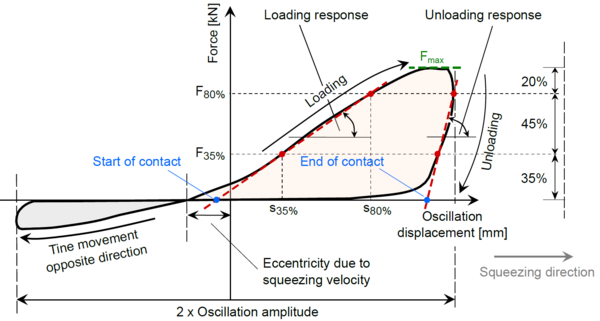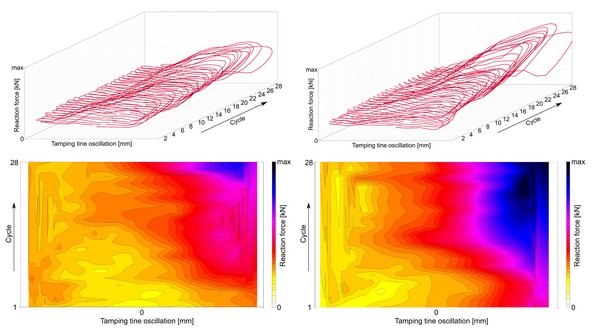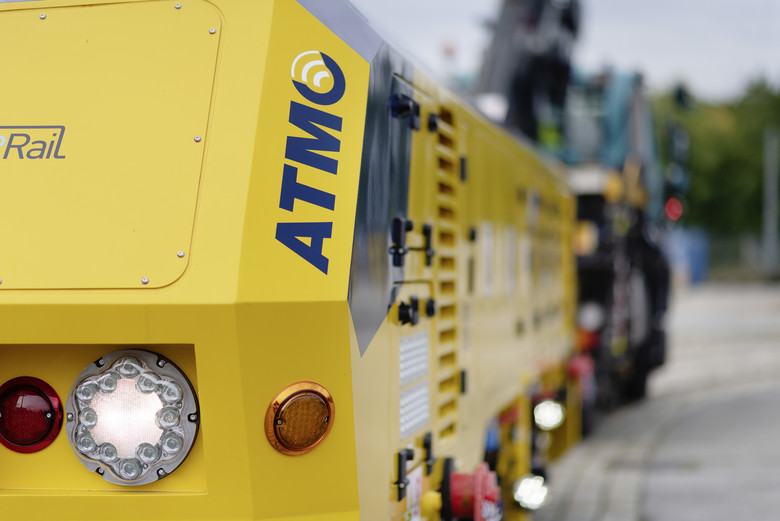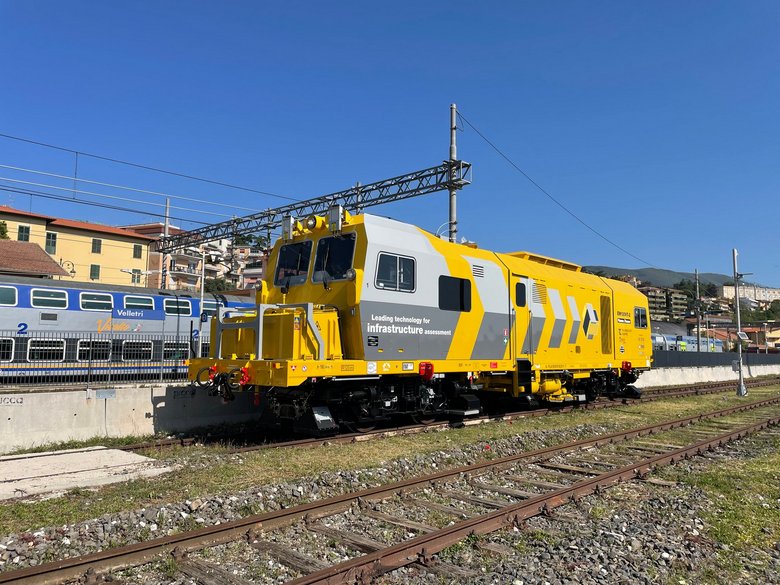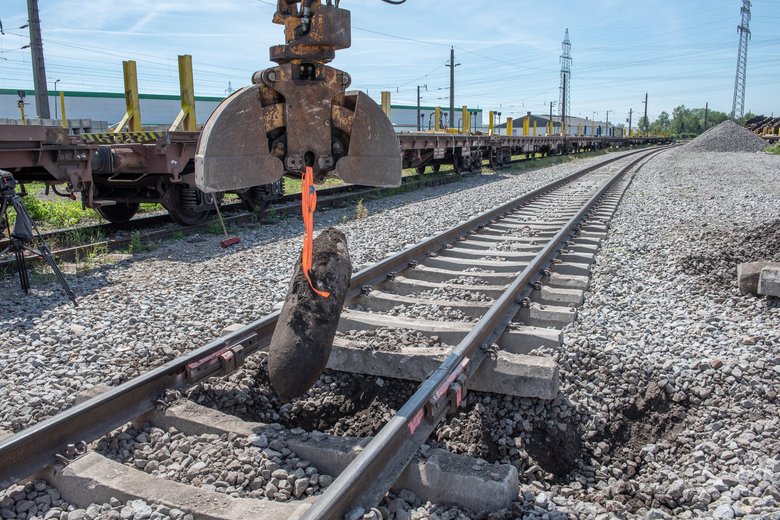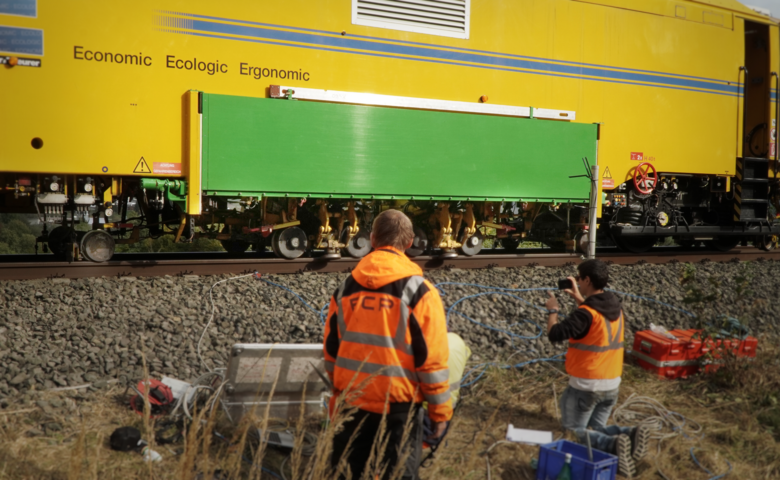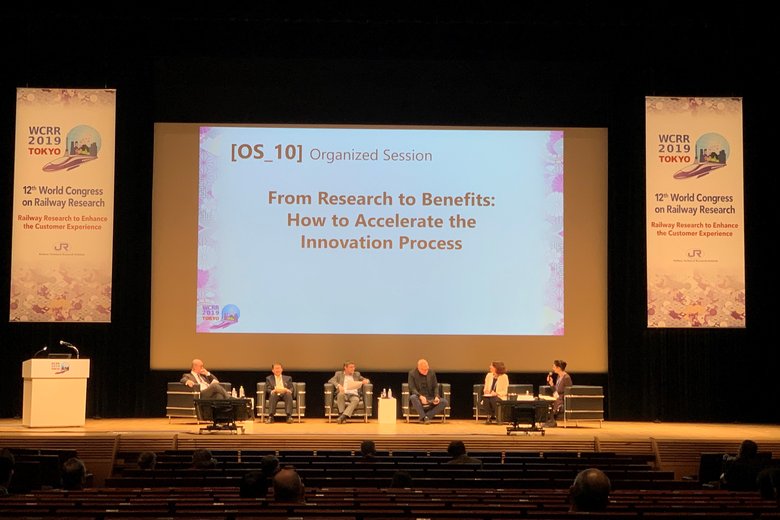The tamping unit that understands the ballast
How does the tamping unit recognise the condition of the ballast?
How does the filling control work?
Plasser & Theurer tamping machines work with constant hydraulic pressure. This means that the closing speed of the tamping tines during squeezing will automatically adapt to the ballast resistance. As soon as the void below the sleeper is completely filled, the speed will reduce due to the higher resistance. The filling control of Plasser TampingControl makes use of this principle.
Related links:
The tamping unit that understands the ballast
Just like the sense of touch enables humans to handle objects according to their texture, “sensing” tamping tines enable the machine to treat ballast in an optimum manner. But how do you teach a tamping machine a sense of touch?
Tamping is a complex process which, despite the most diverse conditions, should always aim to deliver the best possible result. But how do you establish optimum parameters if ballast conditions, lifting values, squeezing times, and tamping depths vary so much? And what does optimum mean? These are the questions that the TAMP research project has been dealing with since 2015. It all starts with researching the fundamentals. The aim is for the machine to recognise the condition of the ballast, and based on that, it can select the parameters for optimum tamping. This is paving the way for full automation and optimum track quality at the same time.
The phases of a tamping cycle:
Checkpoint: Understanding the basics
How does the ballast behave during tamping? A tamping unit full of measuring technology elicits the ballast’s secrets. Pressure sensors and accelerometers, resistance strain gauges and angle sensors record the movements of the tamping tines and the forces acting on them at a level of detail never seen before. The resulting data reveals a lot about the ballast and the tamping process.
Checkpoint: Defining the parameters
The next step is to develop a mechanical model in addition to the on-site measurements. With this model, the various conditions of the ballast as well as the processes during tamping can be simulated as accurately as possible. This model is a key tool for answering the following: Which parameters guarantee top quality tamping while preserving the ballast?
In order to determine the parameters, you have to define the optimum degree of ballast compaction below the sleeper. For optimum does not necessarily mean maximum. After all, the ballast needs to be treated gently so it is preserved. That’s why TAMP, amongst other things, is looking at the compactness the ideal sleeper bed should have.
Applying the basic research in practice
For TAMP, fundamental scientific research is certainly not an end in itself. An important short-term objective has been and is to relieve humans through the use of technology and to enable less experienced operators to achieve consistently high-quality results.
The first applications to come out of this research project are already available under the umbrella term Plasser SmartTamping. The Plasser TampingControl, for example, recognises if a void below a sleeper has not been filled completely and indicates to the machine operator if another squeezing cycle is recommended or required. The Plasser TampingReport also documents the condition of the ballast in addition to other quality-relevant details, making it easier to plan future maintenance operations.
The data required for this come from a so-called “reduced measuring system” on the tamping unit consisting of sensors for the hydraulic pressure and angle sensors. Thanks to the research of the fundamentals, the extent of sensors could be reduced to a minimum. This has a positive effect on acquisition costs and servicing requirements.
The results achieved by TAMP so far give hope to achieving further milestones. The “sensing” tamping tines are without doubt a significant step towards full automation of the tamping process and achieving maximum quality at the same time.


